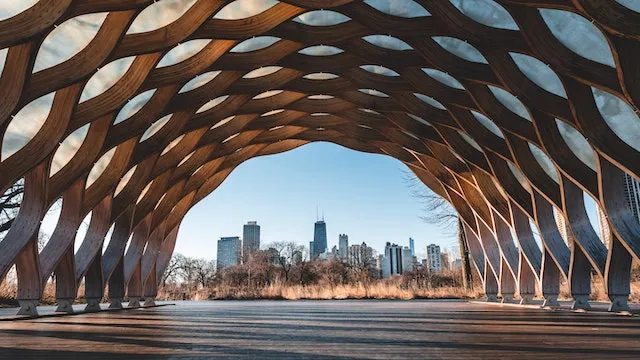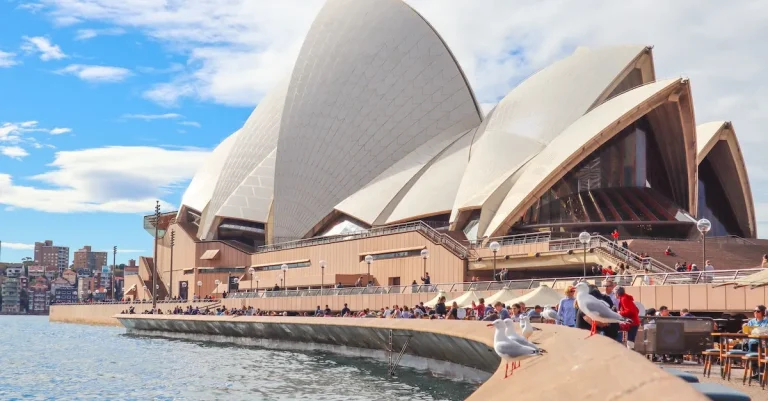Why Was The Chicago World’S Fair Destroyed?
The World’s Columbian Exposition of 1893, also known as the Chicago World’s Fair, was a seminal event in American history that showcased technology, culture, and architecture. After attracting over 27 million visitors during its 6-month run, this iconic fair was quickly demolished. So why was the Chicago World’s Fair destroyed so soon after its massive success? The reasoning involves the fair’s temporary setup, Chicago’s changing identity, and the financial instabilities of the time.
If you’re short on time, here’s a quick answer: The Chicago World’s Fair was designed to be temporary, and the buildings were made of cheap materials that were not meant to last. Also, keeping the fair operational was too costly for Chicago as economic conditions worsened after 1893.
The Fair Was Designed to Be Temporary
One of the main reasons why the Chicago World’s Fair was destroyed is because it was designed to be temporary. The fair, officially known as the World’s Columbian Exposition, was held in Chicago in 1893 to celebrate the 400th anniversary of Christopher Columbus’s arrival in the Americas.
The organizers wanted to create a grand spectacle that would showcase the achievements of the modern world. However, they knew that the fair would only last for a limited period of time.
Buildings were made with plaster and hemp
To meet the temporary nature of the fair, the buildings were constructed using materials that were not meant to last. Plaster and hemp were used extensively in the construction of the fairgrounds. While these materials allowed for the creation of elaborate and visually striking structures, they were not durable in the long run.
Plaster, although it provided a smooth finish, could easily crumble and deteriorate over time. Hemp, a natural fiber, was lightweight and flexible but lacked the strength and durability of other building materials.
Creative but fragile architecture
The architects behind the fair embraced innovative and creative designs, but these architectural choices often compromised the durability of the structures. Elaborate facades, intricate sculptures, and delicate ornamentation characterized many of the buildings.
While these features added to the aesthetic appeal of the fair, they also made the structures more vulnerable to damage. The delicate nature of the architecture meant that even minor wear and tear could have significant consequences.
Always intended as a short-term event
From the very beginning, the World’s Columbian Exposition was intended as a short-term event. The organizers knew that the fair would only be open to the public for a limited period of time, and they did not plan for the structures to remain standing for years to come.
Instead, they focused on creating a memorable experience for visitors during the fair’s duration. Once the fair ended, the buildings were dismantled, and the materials were repurposed or sold off.
It is important to note that the temporary nature of the fair was not seen as a negative aspect at the time. In fact, it was part of the charm and allure of the event. Visitors knew that they were witnessing something special and unique, and the temporary nature of the fair added to its sense of magic and wonder.
While the destruction of the fair may be seen as a loss today, it was an integral part of its original design and purpose.
Chicago Was Rebuilding After the Great Fire
After the devastating Great Fire of 1871, Chicago found itself in ruins. The fire had destroyed much of the city, leaving its residents in shock and despair. However, the people of Chicago were determined to rebuild and restore their beloved city to its former glory.
The fair provided a chance to remake Chicago’s image
The Chicago World’s Fair of 1893 was a turning point for the city. It provided an opportunity for Chicago to showcase its resilience and innovation to the world. The fair was a chance to reshape the city’s image and prove that Chicago was not just a city of fire and destruction, but a city of progress and modernization.
The fairgrounds were meticulously designed and constructed, featuring magnificent buildings and elaborate exhibits. Visitors from around the world marveled at the grandeur of the fair and the technological advancements on display.
The fair was a symbol of hope and a testament to the indomitable spirit of the people of Chicago.
City wanted to focus on new permanent landmarks
While the Chicago World’s Fair was a temporary event, the city had bigger plans for its future. Chicago wanted to focus on creating new permanent landmarks that would serve as a lasting legacy for generations to come. The fair buildings, though impressive, did not fit into these long-term plans.
The city had already identified key areas for redevelopment, such as the Burnham Plan, which aimed to create a more efficient and aesthetically pleasing city layout. The fair buildings, with their extravagant designs and temporary nature, did not align with the city’s vision for its future.
Fair buildings didn’t fit with long-term plans
Another factor that led to the destruction of the fair buildings was the cost of maintenance. The fair had attracted millions of visitors during its run, but the upkeep of the buildings would have been too expensive for the city to handle in the long term.
The decision was made to dismantle the fair buildings and make way for new developments that would better serve the needs of the growing city.
Although the destruction of the fair buildings may have been a loss in terms of architectural beauty, it was a necessary step for Chicago’s progress. The city continued to thrive and evolve, creating new landmarks and embracing modernity while preserving its rich history.
Sources:
It Was Too Expensive to Maintain
The Chicago World’s Fair, also known as the World’s Columbian Exposition, was an extravagant event that showcased the achievements of the United States and celebrated the 400th anniversary of Christopher Columbus’s arrival in the New World.
However, despite its grandeur, the fair faced numerous financial challenges which eventually led to its demise.
Running operational costs were extremely high
One of the main reasons why the Chicago World’s Fair was destroyed was due to the exorbitant costs associated with its maintenance. The fair featured magnificent buildings, intricate landscaping, and state-of-the-art exhibits, all of which required a significant amount of upkeep.
The daily operational costs, including electricity, security, and sanitation, were astronomical. The fair had to remain open for six months, and the expenses quickly piled up.
According to worldsfairchicago1893.com, the fair required approximately $27 million to build, which is equivalent to over $800 million in today’s currency. The operational costs alone were estimated to be around $1.5 million per month, a staggering amount during that time.
Despite the revenue generated from ticket sales and concessions, it simply wasn’t enough to cover the ongoing expenses.
The economic recession reduced funds
Another factor that contributed to the destruction of the Chicago World’s Fair was the economic recession that struck the United States in the early 1890s. The country was facing a severe financial crisis, known as the Panic of 1893, which resulted in widespread unemployment and business failures.
This economic downturn significantly impacted the fair’s funding as potential sponsors and investors were reluctant to contribute due to their own financial struggles.
The lack of financial support from both the public and private sectors made it increasingly difficult for the fair’s organizers to meet their financial obligations. They were forced to make budget cuts and scale back on various aspects of the fair, ultimately compromising its overall success.
Many structures were in disrepair after 6 months
While the Chicago World’s Fair was designed to be a temporary event, it was expected to last for the entire duration of six months. However, due to the high costs and financial difficulties faced by the organizers, maintaining the fairgrounds became increasingly challenging as time went on.
As a result, many of the structures and exhibits started to deteriorate and fall into disrepair.
The fairgrounds were not built to withstand the test of time, and the lack of maintenance and repairs led to structural issues. Buildings began to crumble, exhibits became damaged, and the overall appearance of the fairgrounds deteriorated.
This decline in quality further diminished the fair’s appeal and contributed to its eventual demise.
Some Buildings Were Preserved
Despite the destruction that took place after the Chicago World’s Fair of 1893, there were a few buildings that managed to escape the wrecking ball. These structures not only survived but also found new purposes, becoming iconic landmarks in Chicago.
The Fine Arts Palace became the Museum of Science and Industry
One of the most notable buildings that was preserved is the Fine Arts Palace. This magnificent structure, which showcased some of the most breathtaking art exhibits during the fair, was transformed into what is now known as the Museum of Science and Industry.
Today, visitors can explore interactive exhibits, learn about scientific advancements, and marvel at the grandeur of this historic building.
Some structures moved to new locations
Not all preserved buildings stayed in their original locations. In an effort to save them from demolition, some structures were carefully disassembled and relocated to different parts of the city. One such example is the Japanese Ho-o-den Pavilion, which was moved to Jackson Park after the fair.
This beautiful structure, with its intricate woodwork and traditional Japanese design, continues to captivate visitors to this day.
But most were demolished from 1893-1894
Unfortunately, despite efforts to preserve the fair’s architectural wonders, the majority of the buildings were demolished in the years following the fair. The demolition process took place from 1893 to 1894, making way for new development and urban expansion in Chicago.
While it is a loss that these structures are no longer standing, their legacy lives on through photographs, historical accounts, and the impact they had on the city’s architectural and cultural history.
Conclusion
In the end, the temporary nature of the Chicago World’s Fair’s structures, paired with Chicago’s shifting priorities and the crippling economic downturn, necessitated the demolition of most of the fairgrounds within just one year. Though short-lived, the Chicago World’s Fair helped redefine America’s identity at the turn of the century. The fair proved that even the most stunning human creations can be ephemeral.
The Chicago World’s Fair represented a glorious feat of ingenuity, culture and imagination. Yet its transient existence was inevitable given its temporary materials, Chicago’s rebuilding needs, and the economic realities of 1893. Within months, most traces of this dream-like fair vanished – but its impact on American identity and innovation remains timeless.








